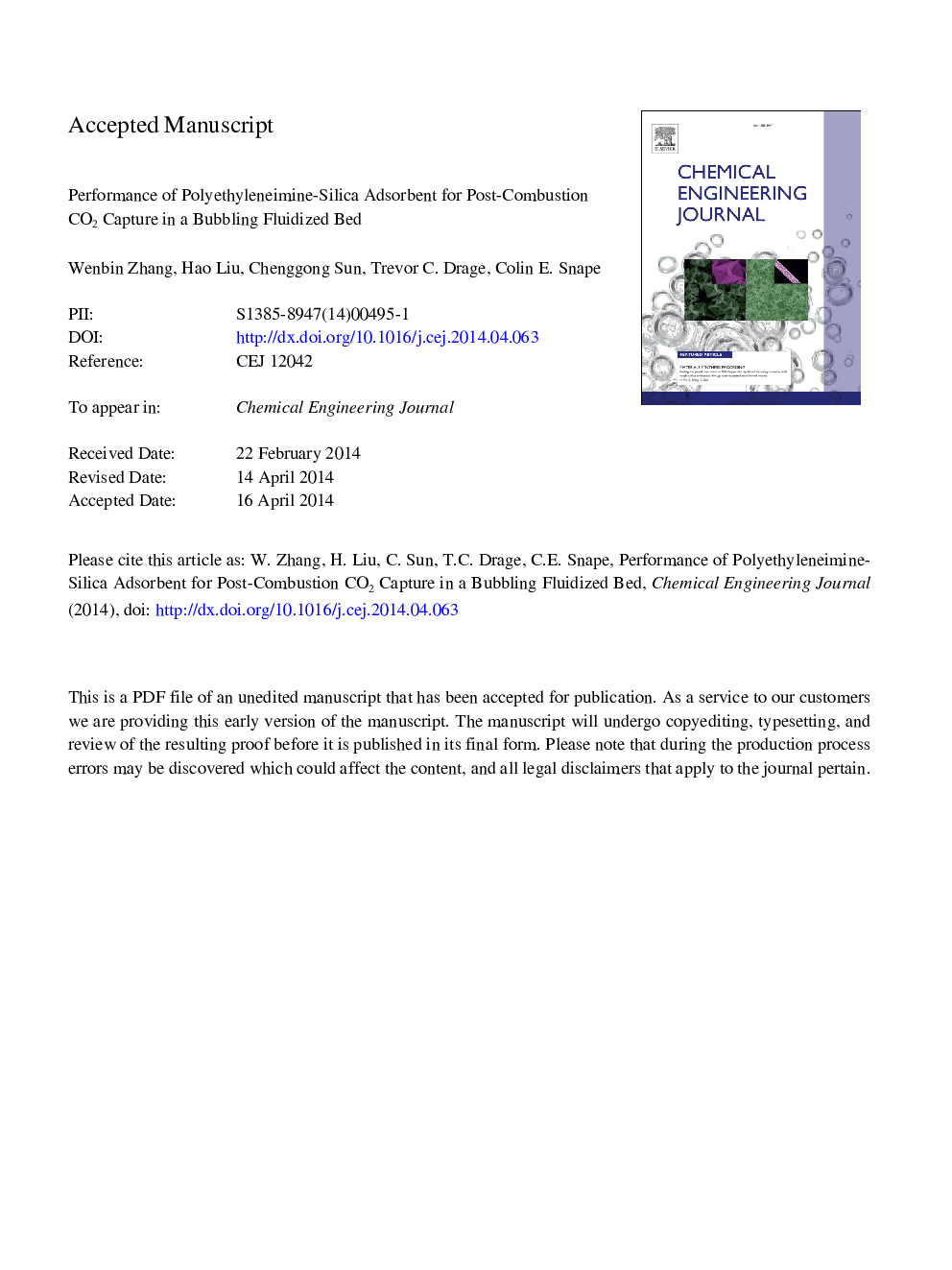| Article ID | Journal | Published Year | Pages | File Type |
|---|---|---|---|---|
| 6586468 | Chemical Engineering Journal | 2014 | 41 Pages |
Abstract
The high performance of polyethyleneimine (PEI)-based solid adsorbent for CO2 capture has been well recognized in thermogravimetric analysis (TGA) and small-scale fixed bed reactors through the measurements of their equilibrium capacities but has not been really demonstrated on larger scales towards practical utilization. In the present study, a laboratory-scale bubbling fluidized bed reactor loaded with a few kg adsorbent is used to evaluate the adsorption performance of PEI-silica adsorbent under different working conditions including with/without the presence of moisture, different gas-solid contact times, initial bed temperatures, and CO2 partial pressures. The adsorption capacities have shown a clear degradation tendency under dry condition. However, they can be stabilized at a high level of 10.6-11.1% w/w over 60 cycles if moisture (ca. 8.8Â vol%) is present in the gas flow during adsorption and desorption. Breakthrough capacities can be stabilized at the level of 7.6-8.2% w/w with the gas-solid contact time of 13Â s. The adsorption capacities for the simulated flue gases containing 5% CO2 are only slightly lower than those for the simulated flue gases containing 15% CO2, indicating that the PEI-silica adsorbent is suitable for CO2 capture from flue gases of both coal-fired and natural gas-fired combined cycle power plants. The exothermal heat of adsorption is estimated by the energy balance in the fluidized bed reactor and found to be close (within 10%) to the measured value by TG-DSC. The regeneration heat for the as-prepared PEI-silica adsorbent is found to be 2360Â kJ/kgCO2 assuming 75% recovery of sensible heat which is well below the values of 3900-4500Â kJ/kgCO2 for a typical MEA scrubbing process with 90% recovery of sensible heat.
Related Topics
Physical Sciences and Engineering
Chemical Engineering
Chemical Engineering (General)
Authors
Wenbin Zhang, Hao Liu, Chenggong Sun, Trevor C. Drage, Colin E. Snape,
